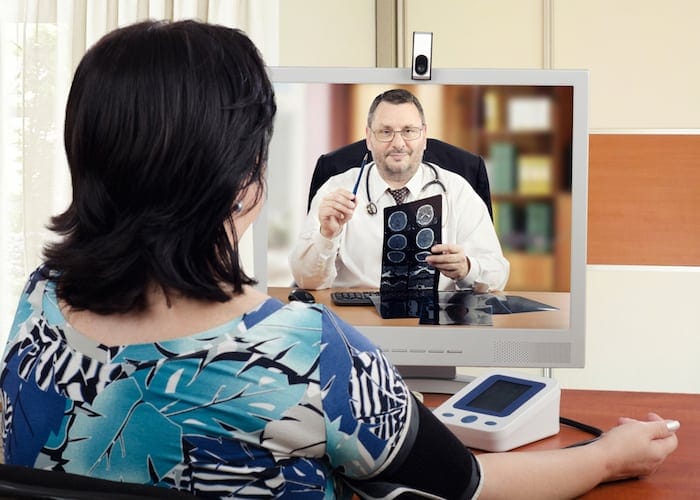Photo credit: Depositphotos
Reliably transmitting biometrics via remote patient monitoring devices is critical for administering quality telehealth care and improving patient outcomes.
By Wayne Meng, Founder and CEO, RemetricHealth
The demand for telehealth in the United States has grown considerably in the past ten years. In 2017, patients were waiting an average of nearly 30 days to see their doctor, whose accessibility is growing increasingly scarce. It’s little wonder that from 2010-2017, the use of telehealth in hospitals increased from 35% to 76%, with nearly every state Medicaid program covering various aspects of telehealth services.
That was before COVID-19. The pandemic has prompted a surge in telehealth services in the past year, as most states continue to restrict in-person visits for all but the most acute medical events. Even now, as we enter our second year of pandemic restrictions, telehealth services remain a top priority for many health plans and providers.
“For years, telehealth has been considered the future of medicine – it just never became the present. Then, as the COVID-19 pandemic shut down doctors’ offices and clinics across the country, telemedicine suddenly became the only way patients could see their doctors and vice versa,” according to a USA Today article. “Telehealth use surged from 8% of Americans in December 2019 to 29% in May 2020 as primary care and mental health physicians and specialists turned to remote care out of necessity during the COVID-19 pandemic.”
While telehealth has no doubt helped doctors stay connected to their patients for things like chronic disease management and assessing potential COVID-19 symptoms, sometimes a chat over videoconference just isn’t enough.
What’s missing is the data. Especially for older patients and those with chronic diseases, information such as blood pressure, blood sugar, weight, heart rate, oxygen level, and lung function can be crucial for prescribing the right treatments and avoiding costly acute events. For a truly complete picture of a patient’s health, pairing remote patient monitoring (RPM) devices with telehealth is key.
In a recent survey from Spyglass Consulting Group, 88% of respondents “have invested or are evaluating investments in RPM technologies to support high-risk chronically ill patients whose conditions are considered unstable and at-risk for hospital readmissions.”
In 2010, RemetricHealth, then known as PMD Healthcare, developed the first-ever patented, FDA-approved at-home personal spirometer, Spiro PD, which measures lung function. In recent years, RemetricHealth has expanded its RPM capabilities, adding devices (such as a blood pressure monitor, weight scale, pulse oximeter, and more) that physician groups, hospitals, home health agencies and payers can use to monitor their patients’ overall health. The kits also are beneficial for chronic care management for conditions including CHF, hypertension, COPD and diabetes, as well as COVID-19 symptom monitoring.
By themselves, the RPM devices are robust and versatile, measuring critical vital signs. But when used in conjunction with the included digital tablet equipped with telehealth capabilities, the kits’ full value is unleashed, allowing the unfiltered transmission of essential health data to medical professionals.
The result is far more than the value of either RPM or telehealth. Instead, the RPM kits offer a robust, fully integrated healthcare solution that allows for the seamless administration of medical care.
That’s enhanced telehealth, a proactive approach to healthcare management that offers profound benefits for the future delivery of medical care. And it’s an approach that promises to endure long after the public health threat of COVID-19 has receded.
Telehealth will continue to play a prominent role in our healthcare industry, and RemetricHealth is committed to further facilitating its adoption. Our RemetricHealth RPM solutions offer physician groups, hospitals, home health agencies, and payers a more reliable way to monitor and assess patient biometrics, fostering better decision making and improved patient outcomes.
Schedule a meeting with us to learn more today.
About the author:
Wayne Meng is founder and CEO of RemetricHealth
The Editorial Team at Healthcare Business Today is made up of skilled healthcare writers and experts, led by our managing editor, Daniel Casciato, who has over 25 years of experience in healthcare writing. Since 1998, we have produced compelling and informative content for numerous publications, establishing ourselves as a trusted resource for health and wellness information. We offer readers access to fresh health, medicine, science, and technology developments and the latest in patient news, emphasizing how these developments affect our lives.









1 thought on “How Remote Patient Monitoring Enhances Telehealth”
Comments are closed.